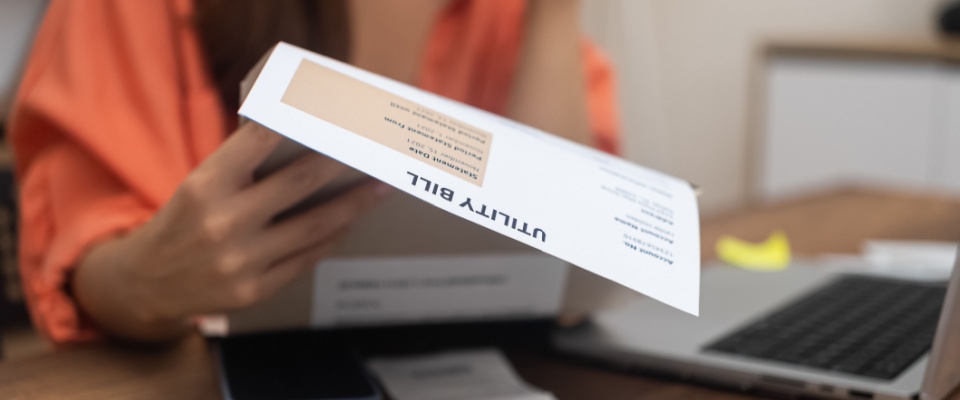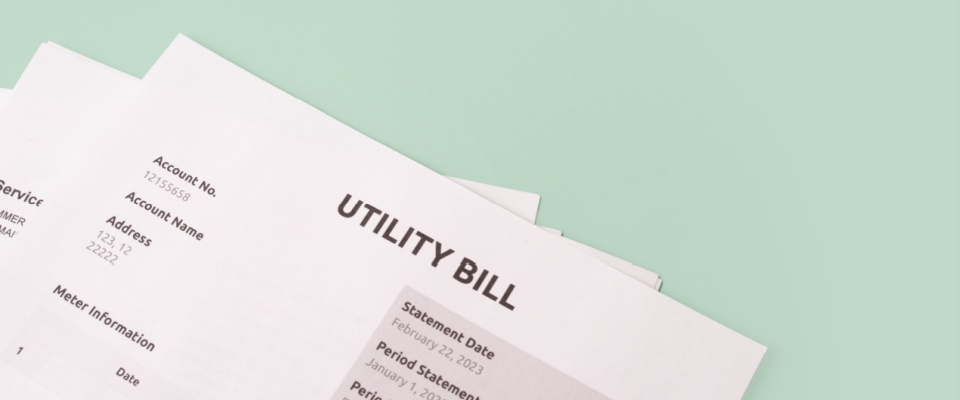Share this article:
Have you ever looked at an apartment listing and noticed the words “utilities billed through RUBS” or “RUBS system applies”? Many renters come across this term when searching for an apartment or reviewing a lease agreement, and it can sound a little technical at first.
The good news is, RUBS isn’t as complicated as it sounds. Once you understand how it works, you’ll know exactly what to expect when it comes to paying for your utilities.
In this guide, we’ll explain:
- What RUBS utility billing is
- Why landlords use RUBS
- What it means for you as a renter
- RUBS benefits for renters
- What to ask before signing a lease with RUBS
What is RUBS utility billing?
RUBS stands for Ratio Utility Billing System. It’s a method that landlords or property managers use to divide the cost of shared utilities — like water, sewer, gas, and sometimes trash — among all the renters in a building.
Instead of each apartment having its own individual meter, the entire property has one or a few “master meters.” As a result, the landlord gets one big utility bill and then uses a formula to figure out how much each tenant should pay.
That formula can be based on things like:
- The number of people living in the unit
- The apartment’s square footage
- The number of bedrooms or bathrooms
- A mix of these factors
Essentially, RUBS estimates how much of the total utility usage is likely coming from your apartment and assigns you that share. You’ll then see that amount added to your monthly rent or as a separate charge on your billing statement.
Why landlords use RUBS utility billing
Landlords and property managers often use RUBS because it’s an efficient, cost-effective way to divide shared utility expenses without installing separate meters for every apartment.
In older or multi-unit buildings, adding individual meters can be expensive and complicated. RUBS solves that problem by using a fair formula to estimate each renter’s portion based on factors like square footage or occupancy.
It also helps landlords recover utility costs while encouraging tenants to be mindful of their usage. When renters are billed for their share, they’re more likely to conserve water and energy. This often reduces waste, keeping overall costs down for the entire property.
What RUBS means for renters
As a renter, RUBS can affect how your monthly bills are structured, but it might be simpler than you think. Here’s what you should know before signing a lease that uses RUBS utility billing.
1. You’ll pay for what you use — indirectly
Since there’s no individual meter, your actual usage isn’t tracked precisely. But the formula is designed to make billing as fair as possible. For example, a larger unit with more occupants is expected to use more water and will pay a higher share.
2. You’ll likely have fewer accounts to manage
With RUBS, you usually don’t need to open separate utility accounts for water, sewer, or trash. The landlord handles the main account, and you simply pay your share along with your rent or through a resident portal.
3. Your utility costs may vary slightly month to month
Because your portion is based on the total property’s usage, your bill might change from one month to another, especially during seasons when heating, cooling, or water use fluctuates.
4. You can ask for transparency
If you’re curious about how your RUBS charges are calculated, don’t hesitate to ask. Many landlords will share the calculation method or even show examples from previous months to give you an idea of typical costs.
Benefits of RUBS for renters
While RUBS is often seen as a system that benefits landlords, renters can also enjoy some advantages.
1. Convenience
You don’t have to deal with setting up multiple utility accounts or remembering different payment deadlines. Your utility costs are rolled into one easy payment each month.
2. Potential savings
Because RUBS encourages mindful usage, tenants who conserve water and energy may see lower overall costs. If the property’s total usage drops, everyone benefits.
3. Predictability
Although the amount can vary, it’s often within a similar range each month. Many renters find that it’s easier to budget for a RUBS bill than multiple fluctuating utility bills from different providers.
4. Fairer than flat-rate systems
Some buildings simply charge a flat fee for utilities, no matter how much each tenant uses. RUBS is typically more balanced because it takes into account factors like apartment size and occupancy, making the split fairer.
What to ask before signing a lease with RUBS
If you’re considering an apartment that uses RUBS utility billing, it’s smart to ask a few questions first. Understanding how it works in your specific building can help you avoid surprises later.
Here’s what to ask:
- Which utilities are billed through RUBS?
Some properties include only water and sewer, while others may add gas, trash, or even common area electricity. - How is my share calculated?
Ask whether the formula is based on square footage, the number of people in your apartment, or another factor. - Is there a cap or limit on what I can be charged?
Some leases set a maximum monthly amount for utility billing to keep costs predictable. - Can I see an example bill?
This helps you estimate what you might expect to pay each month. - Are there any local regulations?
In some cities and states, there are rules about how RUBS must be disclosed or calculated. Your landlord should be transparent about these.
Things to keep in mind
RUBS isn’t perfect. Because it’s based on estimated usage rather than individual meters, it might not always reflect your exact consumption. For instance, if you live alone in a large unit, you might feel like you’re paying a bit more than you actually use.
However, many tenants still find the system fairer and simpler than flat-rate billing. It can also make renting in older buildings — where installing separate meters isn’t possible — more practical and affordable.
If you’re ever unsure about how your utilities are billed, review your lease carefully and ask questions. Most landlords are happy to explain how they calculate charges.
So, what is RUBS utility billing? In simple terms, it’s a fair and convenient way for landlords to divide utility costs among renters when individual meters aren’t available. It helps cover shared expenses like water, sewer, and gas while encouraging everyone to use utilities responsibly.
For renters, RUBS can mean fewer accounts to manage, more predictable billing, and a straightforward way to handle shared costs. As long as you understand how your share is calculated and what’s included, RUBS can make managing utilities in your rental much easier.
Before signing your next lease, take a moment to ask how utilities are billed. A clear understanding of RUBS can help you budget wisely and avoid confusion later.
FAQs: RUBS utility billing in 2025
Q: What does RUBS mean in an apartment lease?
A: RUBS stands for Ratio Utility Billing System. It’s a method used to divide shared utility costs — like water, gas, or sewer — among tenants based on factors such as unit size or number of occupants.
Q: How does RUBS utility billing work?
A: The landlord receives one master utility bill for the property and then uses a formula to calculate each renter’s share. You’ll usually see your portion added to your rent or as a separate monthly charge.
Q: Is RUBS the same as having separate utility meters?
A: No. With RUBS, you don’t have your own meter. Instead, the total bill is split among tenants using an estimate. It’s common in buildings where installing individual meters isn’t practical.
Q: Can RUBS charges change every month?
A: Yes. Because your portion is based on the property’s total utility use, your monthly cost may go up or down depending on seasonal changes or overall consumption.
Q: What utilities are usually included in RUBS billing?
A: Most RUBS systems cover water, sewer, and trash. Some properties may also include gas or electricity, but that varies by building and local regulations.
Share this article:
Alexandra Both is a senior real estate writer and research analyst with RentCafe. She brings over almost 10 years of real estate writing experience, having served as a senior editor at Commercial Property Executive and Multi-Housing News. A seasoned journalist, Alexandra has worked across print, online, and broadcast media. Her work has been featured in a variety of prominent outlets, including The New York Times, The Guardian, USA Today, and Architectural Digest. She holds a B.A. in Journalism and an M.A. in Community Development.
The Ready Renter has your back
Tips, news, and research curated for renters, straight to your inbox.




Related posts
Subscribe to
The Ready Renter newsletter









